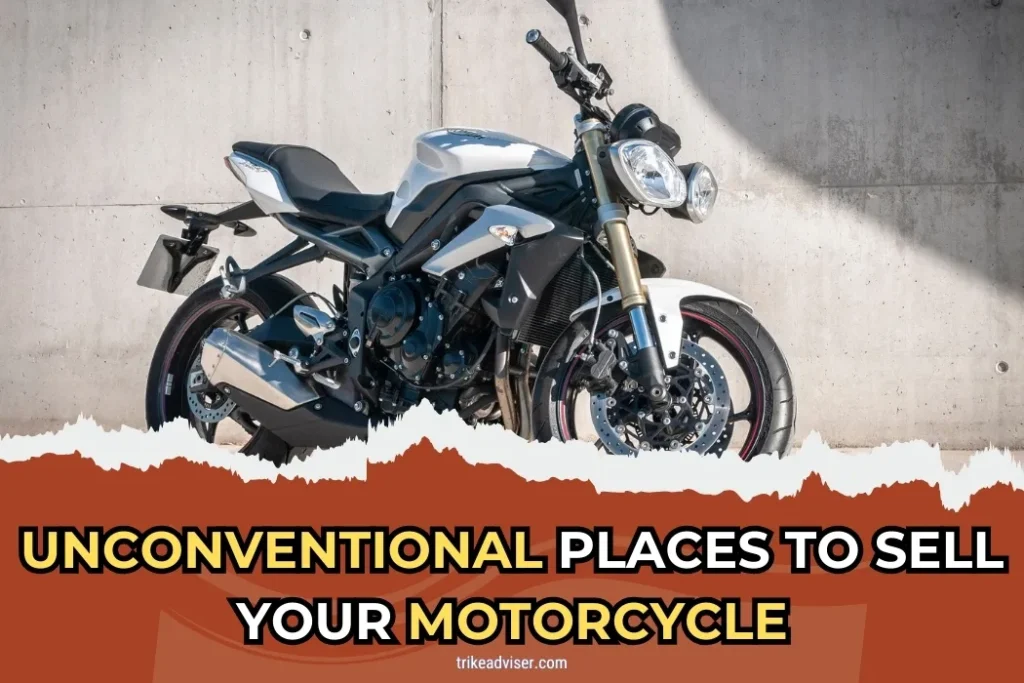Struggling to sell your motorcycle? Are common platforms just not cutting it anymore? You’re not alone. Many motorcycle owners find the typical sales routes oversaturated.
It’s frustrating, right? You post online, only to compete with countless similar listings. Or maybe, you’ve tried selling at a local dealer, and it feels like your bike just blends into the background.
It’s tough when you know your motorcycle deserves a spotlight. What if you could find fresh, eager eyes? Places where your bike stands out and attracts serious buyers?
It’s time to explore some less-trodden paths. Let’s dive into seven unconventional places that could turn the tables for you.
Get ready for new perspectives and potentially faster sales. Stick around to discover these unique venues to showcase your prized motorcycle.
7 Unconventional Places to Sell Your Motorcycle Today!
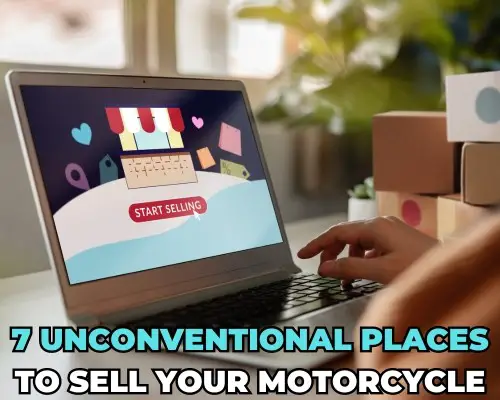
Online Marketplaces
Ever listed a bike on eBay or Facebook Marketplace? These platforms are bustling hubs. Millions log on daily.
Your motorcycle can shine here with great photos and detailed descriptions. Response time? Make it snappy! Buyers love a quick reply.
Websites like these broaden your reach fast. Just remember, the broader the audience, the better the chances.
Motorcycle Forums and Communities
Got a specific bike model? There are forums just for that. Online communities for motorcycle enthusiasts can be goldmines.
Engage, discuss, and sell directly to those who care. Each forum has its rules—stick to them. This approach puts your bike in front of passionate buyers, potentially boosting your price.
Motorcycle Shows and Events
Think about the last local bike show you visited. Ever imagine your bike on display there? Shows and events let you flaunt your motorcycle in person.
You can chat with potential buyers, share stories, and maybe clinch a deal. It’s direct, personal, and effective.
Motorcycle Parts Websites
Selling parts instead of a whole bike? Websites dedicated to motorcycle parts cater to a niche market. List your items where enthusiasts search for upgrades or replacements.
This targeted approach helps connect with buyers looking exactly for what you offer.
Classified Ads in Motorcycle Magazines
Classifieds in bike magazines aren’t old school; they’re targeted. These ads reach readers who are already motorcycle fans.
Choose magazines that align with your bike’s brand or style. It’s a straightforward way to reach dedicated enthusiasts.
Motorcycle Auctions
Is your motorcycle a rare find or a vintage classic? High-end auctions like Mecum specialize in unique bikes.
These events attract collectors and aficionados who might pay premium prices for something special. It’s a thrilling way to sell, with potentially higher rewards.
Motorcycle Dealerships
Need to sell quickly? Consider a dealership. Yes, the price might be lower, but it’s straightforward and fast.
To expand their selection, dealers are always on the lookout for high-quality pre-owned motorcycles. This option is a time & effort saver if you’re looking for a straightforward purchase.
Get Ready to Sell – Prep Your Motorcycle
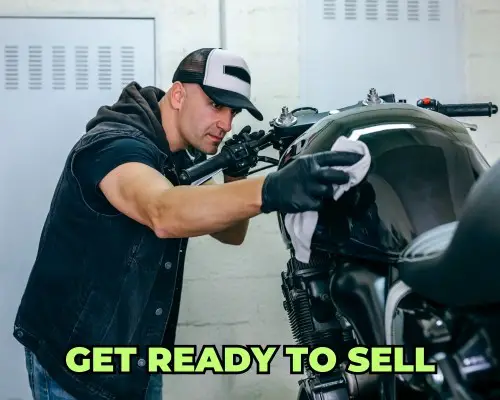
Selling your motorcycle successfully starts long before you snap those sale photos or meet prospective buyers.
It involves a bit more than a quick rinse and signing off on the paperwork. Let’s get into how you can elevate your bike’s appeal and make the sale process not just quicker, but also potentially more profitable.
Detailing Your Bike: Importance of a Clean Presentation
- Deep Clean: Think back to that showroom condition when you first bought your motorcycle. Achieving that level of cleanliness might seem daunting, but it’s achievable.
Focus on areas like beneath the seat where grime collects and the battery terminals, which often get overlooked.
Use specialized cleaners for different parts of your bike to make it sparkle.
- Detailing Touches: After washing, apply a high-quality wax to protect the paint and make it shine like new.
Don’t forget the chrome and metal parts; polishing these can often make a used bike look in mint condition.
Pay special attention to your wheels and mirrors, as these are prime areas that buyers check.
- Final Checks: Leather seats? Treat them with a conditioner that not only cleans but also preserves the material.
It’s these small details that can turn heads and solidify a buyer’s decision.
Mechanical Checkup: Ensuring Your Bike is Roadworthy
- Professional Inspection: It might seem excessive, but having your bike checked by a professional mechanic can save you a lot of headaches. They can spot potential issues that you might miss, from small leaks to worn brake pads. Address these before listing your bike; it shows care and forethought.
- Stock Parts: While customized parts might be a hit for some, they can be a miss for others. Stock parts generally appeal to a broader audience.
If you’ve customized your bike, consider reverting to stock or offering the original parts with the purchase. It’s an appealing compromise for buyers wary of too much customization.
- Functionality Test: Every light, the horn, the brakes—check everything functions as it should. Nothing deters a buyer faster than discovering functional flaws during a test ride.
Essential Documentation: What You Need to Have Ready
- Title and Registration: The absolute basics, but vital. No sale can proceed smoothly without a clear title and up-to-date registration. Having these ready shows organization and transparency.
- Bill of Sale: Prepare this crucial document ahead of time. It should clearly state the sale conditions, and agree price, and include both parties’ information.
This legal document protects both buyer and seller and speeds up the closing process.
- Vehicle History Report: Transparency sells. Offering a comprehensive history report from services like Carfax can significantly ease buyer concerns.
It shows you have nothing to hide and supports your asking price with documented evidence.
- Maintenance Records: Compile a thorough record of all service appointments, repairs, and upgrades.
This not only demonstrates your commitment to the bike’s maintenance but also helps substantiate your asking price.
Incorporating these detailed preparations not only enhances the physical and legal readiness of your motorcycle but also instills confidence in potential buyers.
They can visibly see and feel the care you’ve invested, making your offer much more appealing compared to less prepared sellers.
This level of detail might seem like overkill, but in the competitive market of motorcycle sales, it’s these nuances that can set you apart and clinch that sale.
Fair Price for Your Ride – Research Motorcycle Value
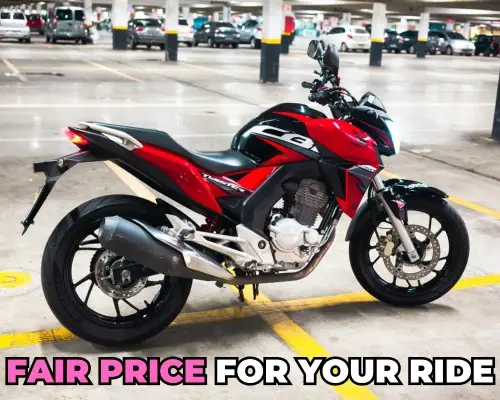
Setting the right price for your motorcycle might feel like navigating a tricky road map. But with the right tools and insights, you can pinpoint a fair market value that entices buyers while rewarding your investment.
Online Research: Delve into the Market
- Market Reports: Start with in-depth reports from sources like Persistence Market Research or Industry Research.
These aren’t just numbers; they reveal the heartbeat of the market. For instance, if cruisers are trending, and you’re selling one, you might be in for a pleasant surprise on your asking price.
- Trend Analysis: Regularly check for whitepapers and articles. These sources are like having a coffee with market experts—they share insights that are not always obvious, like seasonal spikes in bike sales.
Consult Industry Experts: Leverage Professional Insights
- Dealer Insights: Speaking with local dealers is like a crash course in Economics 101. They offer a real-world perspective on what bikes are moving fast or sitting idle.
Their feedback can help you adjust your price or perhaps decide to wait a few weeks to list.
- Mechanic Advice: Mechanics often see patterns you might miss. A chat could reveal that models similar to yours have issues after a certain mileage, which could adjust your pricing strategy.
Check Competitor Prices: Know Your Market
- Local Listings: Scour local ads to gauge the temperature of the market. This isn’t about matching the lowest price; it’s about understanding where your bike stands in the lineup.
- Adjust for Features: If your motorcycle has unique or custom features, these should play a leading role in your pricing narrative.
For instance, a custom exhaust system can be a major selling point that justifies a higher price.
Consider the Condition of Your Motorcycle: Assess and Evaluate
- Maintenance and Upkeep: Just like a home with a new roof appeals to house buyers, a bike with recent major service work appeals to bike buyers.
Detail any recent services, new parts, or upgrades in your listing—it’s evidence of your care.
- Aftermarket vs. Original Parts: Original parts often appeal more to purists, while aftermarket upgrades can attract hobbyists or specific types of riders. Know your audience—this can significantly sway your price.
Use Online Tools: Tap into Valuation Resources
- Kelley Blue Book and J.D. Power: These tools are not just resources; they’re your negotiation backers.
They provide a benchmark that’s hard to dispute, offering both buyer and seller a common ground for fair price discussions.
- Real-Time Data: The advantage of these online tools is their reflection of the current market. A bike valued at $5,000 last year might fetch more or less this year based on recent trends. Always update your data before listing.
By combining thorough research, expert consultations, and detailed assessments, you create a well-rounded view of your motorcycle’s worth.
This preparation doesn’t just prepare you for pricing—it builds a narrative around your bike that’s compelling and convincing, paving the way for a smoother sale.
Increase Your Motorcycle’s Worth – Beat the Market
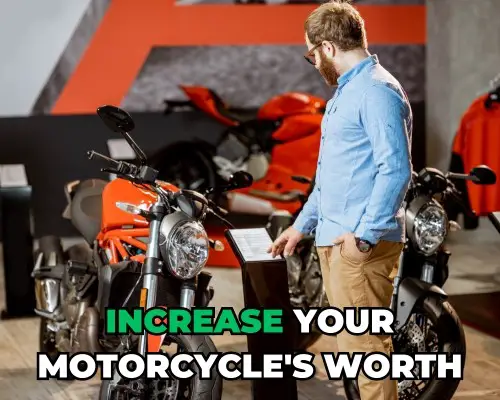
Selling your motorcycle for more than the going rate may seem impossible, but it is doable with the right planning and information.
Let’s examine how you might make your bicycle a sought-after item that defies the standard depreciation curve.
Make and Model: Leverage Built-in Value
- Brand Prestige: This is a big selling advantage if your motorcycle comes from a company that is renowned for its durability and dependability, such as Harley-Davidson, BMW, or Ducati.
These are the bikes that aficionados talk about fixing or preserving; they are frequently seen as investments.
- Cult Models: Certain models have a near-mythical status due to their performance, design, or role in motorcycle history.
If yours is one such model, highlight its specific appeal in your listings. Is it a model that once broke speed records or featured in a famous movie? That’s your headline right there.
Age: Understanding Depreciation
- Initial Depreciation Curve: Most bikes lose value quickly in the first year. However, if yours is just over a year old, emphasize that the steepest drop is already past, and it offers much better value now than a brand-new one.
- Vintage Charm: Older bikes can often stabilize in value, especially those that hit the ‘classic’ or ‘vintage’ mark. If you’re selling an older model, pitch it as a timeless classic.
Enthusiasts love a bike with a story, and historical value can significantly bump its worth.
Condition: Maximize Physical Appeal
- Showcase Maintenance: It’s not just about functionality; it’s about the bike’s story of care. Have you regularly serviced it at authorized dealers?
Do you use only premium oil and parts? These details make your bike not just a used vehicle but a cherished possession.
- Aesthetic Investments: Sometimes, small cosmetic enhancements can significantly increase a bike’s appeal.
Think about replacing those scuffed handle grips or adding a fresh coat of paint. These can make an old bike feel almost new.
Mileage: Spin the Odometer Reading
- Highlight Gentle Use: More than just the number on the odometer, it’s how the bike got those miles.
Was it mostly gentle highway riding? Kept under cover during off-seasons? These factors make a difference in perceived value.
- Focus on Care over Numbers: Remember, a well-maintained bike with higher mileage can be more appealing than a neglected one with lower mileage. Make sure to articulate the quality of the miles, not just the quantity.
Extras: Showcase Additional Features
- Detail Upgrades: Did you add a high-performance exhaust or custom shocks? These aren’t just extras; they’re improvements that enhance the riding experience.
Be specific about how each added feature upgrades the standard model.
- Custom Elements: Customization can turn a generic bike into a one-of-a-kind. If your modifications include high-quality parts or sought-after technology, these should be at the forefront of your selling points.
Market Conditions: Play to Economic Trends
- Read the Room: Is there a rising trend in motorcycle touring post-pandemic? Highlight how your bike is perfect for this.
Understanding and leveraging current trends can help you position your motorcycle as the ideal choice for today’s buyers.
- Timing Your Sale: Selling your motorcycle when demand is high, like just before the prime riding season starts, can also increase its worth.
More buyers in the market often means a better chance to get your asking price.
Increasing the market worth of your motorcycle means drawing attention to not only what it is but also what it stands for to prospective purchasers: a dependable, well-maintained vehicle that offers adventure, dependability, and style. By taking the appropriate approach, you can provide a dream rather than just a bike.
As an Amazon Associate, I earn from qualifying purchases, at no additional cost to you. Read Our Affiliate Disclosure.

